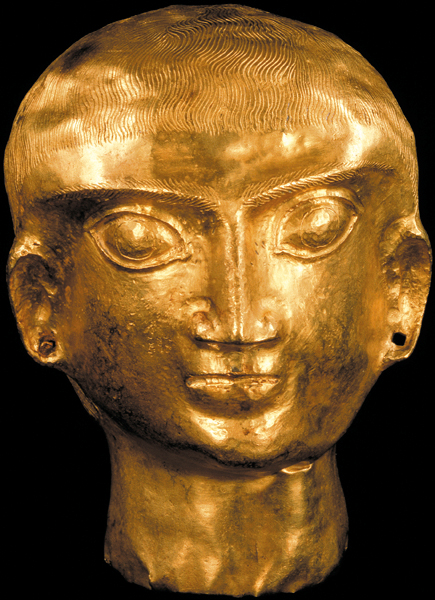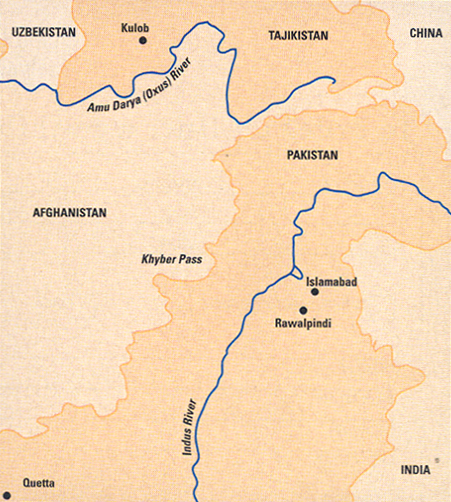
This hollow, 4.5-inch-tall head of beaten gold, depicting a handsome youth and perhaps originally part of a statue, probably dates to the end of the Achaemenid Persian period (fifth-fourth century B.C.) or slightly later. Its details betray a high level of skill in metalworking: Ultra-fine, wavy grooves on the crown represent the young man’s hair, and the individual hairs in the eyebrows are visible. Faint rings encircle the irises of the almond-shaped eyes. The ears are pierced with noticeable holes.

The gold head is one of about 170 items that constitute the Oxus treasure, a hoard of gold and silver vessels, figures, model chariots, personal ornaments and coins now in the collection of the British Museum. How the treasure came to be acquired by the museum is an unusual, and dramatic, story. In May 1880, three merchants in Afghanistan were attacked by robbers. They were rescued by Captain F.C. Burton, a British political official in the region. Burton tracked down the robbers still holding some of the stolen goods, including a beautiful gold bracelet (which Burton purchased). Other pieces from the treasure then surfaced in the bazaars of Rawalpindi in northeast Pakistan. These were acquired by Major-General Sir Alexander Cunningham and by Sir Augustus Wollaston Franks, a curator at the British Museum, who eventually bought Cunningham’s share and bequeathed the entire treasure to the museum.
Already a library member? Log in here.
Institution user? Log in with your IP address.

